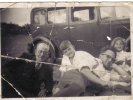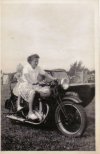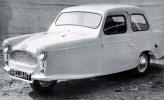-
Welcome to this forum . We are a worldwide group with a common interest in Birmingham and its history. While here, please follow a few simple rules. We ask that you respect other members, thank those who have helped you and please keep your contributions on-topic with the thread.
We do hope you enjoy your visit. BHF Admin Team
You are using an out of date browser. It may not display this or other websites correctly.
You should upgrade or use an alternative browser.
You should upgrade or use an alternative browser.
old car snaps
- Thread starter OtherHalf
- Start date
Robert Ensor (bob)
master brummie
No back seat !!!.View attachment 140371 i had one of these. in 1973. one night i asked a girl i met at the Dunlop club if she wanted a lift home
in my bmw. yes she said. but when we went out side she said sod off,im not getting in that thing
One of those sat in the rear of the Greenland's Social Club in Longbridge Lane for years and as kids we would spend hours playing in it.
I had a customer here in the States who's farther was the importer in to the UK of (bubble cars) BMW
Robert Ensor (bob)
master brummie
My second full time job was at a DAF dealer in Cotteridge, and they were a little quwerky but they were a good alternative to the invalid carriage from the Government.View attachment 140374 any one own one of these daf 55 contraptions?
The simple shift forward or backwoods made them attractive for some along with the cost.
A good majority of the customers/owners had some form of disability.
The cars were originally called Daffodil with model numbers 33, 44, 55 and 66 why Volvo purchased this company I have no idea.
mw0njm.
A Brummie Dude
i tried one once and there was a button on the dash,if you pressed it it actuated nos (nitrous oxide)...... serious now what did the button do?My second full time job was at a DAF dealer in Cotteridge, and they were a little quwerky but they were a good alternative to the invalid carriage from the Government.
The simple shift forward or backwoods made them attractive for some along with the cost.
A good majority of the customers/owners had some form of disability.
The cars were originally called Daffodil with model numbers 33, 44, 55 and 66 why Volvo purchased this company I have no idea.
Brookfields Lad
master brummie
The Variomatic also permitted increased engine braking by operating a switch on the dashboard which reversed the action of the vacuum on the pulley's diaphragm, seeking a lower ratio with increased manifold vacuum.i tried one once and there was a button on the dash,if you pressed it it actuated nos (nitrous oxide)...... serious now what did the button do?
Robert Ensor (bob)
master brummie
I can't remember it's been almost 50 years since I sat in onei tried one once and there was a button on the dash,if you pressed it it actuated nos (nitrous oxide)...... serious now what did the button do?
I remember the clutch was centrifugal with brake like shoes mounted in a circle that flew out against a drum as the engine speed increased
Then we had to adjust the belts when we performed normal services.
Volvo dropped the 33 and 44 models then added Marathon versions of the 55 and 66 a wide stripe down the top body line.
Last edited:
Robert Ensor (bob)
master brummie
Thank you, now of course more things are coming back to me we had to pull off the vacuum lines going to the drums to replace the belts and they could be ( Brummie Saying) a real cow bag.The Variomatic also permitted increased engine braking by operating a switch on the dashboard which reversed the action of the vacuum on the pulley's diaphragm, seeking a lower ratio with increased manifold vacuum.
Then when installing the new belts you had to pull on them real hard so they would open up the drum and slide down so you could get it over the opposing drum
This task was always welcomed in winter and adored when the car came in with snow on the ground.
Robert Ensor (bob)
master brummie
mw0njm.
A Brummie Dude
was that the Austin? did your cousin go to Elliott st.? what was her initial?Here you go my first car, that cutie next to me is my cousin who has not aged at all but is now a grandmother.
Robert Ensor (bob)
master brummie
Yes a Austin J built in Wales, a factory set up by Austin along with the government for coal miners who could no longer minewas that the Austin? did your cousin go to Elliott st.? what was her initial?
A real surprise coming down the stairs Christmas morning and finding that in the hall way painted bright red.
Robert Ensor (bob)
master brummie
Eric Gibson
master brummie
jukebox
Engineer Brummie
My dad bought this1954 Triumph Renown around 1959. Built by Mulliners on a Standard Vanguard chassis with a 2 litre engine it was quite comfortable but heavy to drive having no power steering. Dad sadly died in 1961 but I ran the car for a couple of years. However as I was saving up to get married I had to let it go and sold it for £100. If only...........


Eric Gibson
master brummie
You're right about the heavy steering, they used to rip the chassis where the steering box was mounted, I've welded up a few of those. 
jukebox
Engineer Brummie
Didn't have that problem but wasn't keen on the steering (worm & peg?) - not nearly as positive as rack & pinion. Main probs were king pins and bushes, and the seals under the wet liners which compressed and let water into the cylinders. There was noticable piston slap when cold and when I had the liners reset the garage said they would turn them through 90degrees, but I'm not convinced they did that!they used to rip the chassis where the steering box was mounted, I've welded up a few of those.
Pedrocut
Master Barmmie
To celebrate the award of UK City of Culture to Coventry, local boy Mark Evans tells the history of the classic cars made in Coventry, including the Daimler, the Triumph, the Riley and the Jaguar. (Iplayer BBC4)
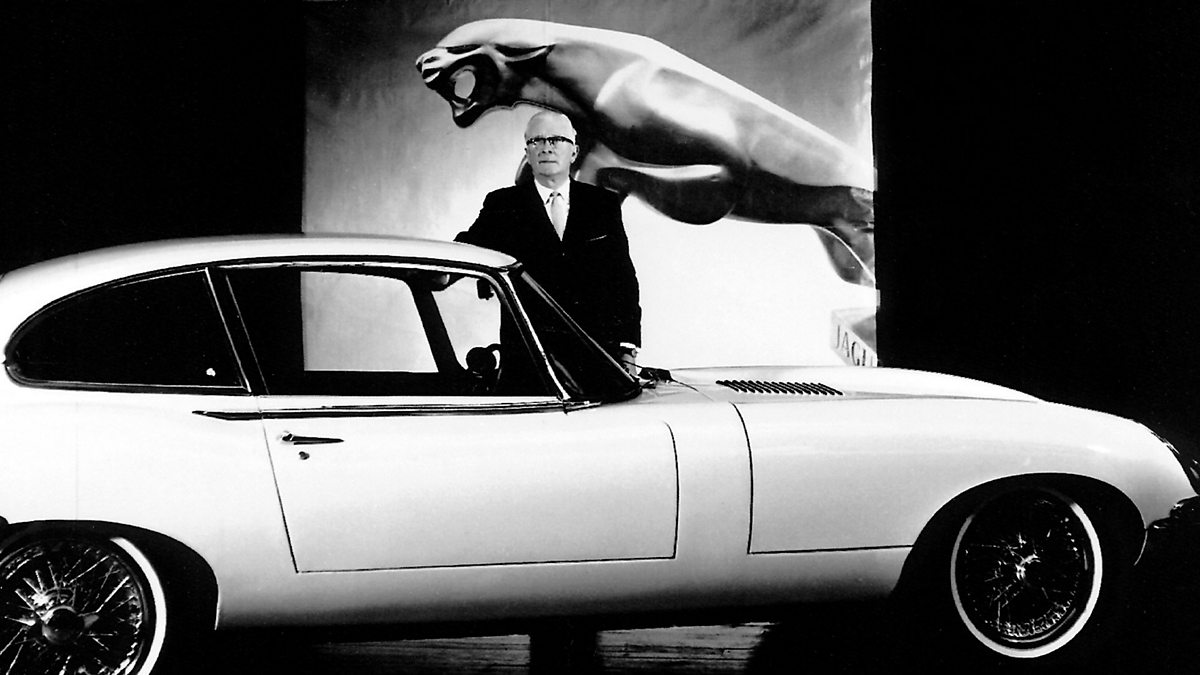
 www.bbc.co.uk
www.bbc.co.uk

BBC Four - Classic British Cars: Made in Coventry
Mark Evans tells the story of Coventry’s classic cars, from the Daimler to the Jaguar.
Johnfromstaffs
Johnfromstaffs
Picture #163, the Austin 12 Tourer.
The triangle with the brake light in it is a warning to the drivers of following vehicles that your car has four wheel brakes and will be able to stop efficiently. Many cars even up to the 1920s had brakes only on the rear axle or in the transmission and were not too good at stopping, the Model T Ford being one example. It was thought that front wheel brakes would promote skids or poor steering control.
The triangle with the brake light in it is a warning to the drivers of following vehicles that your car has four wheel brakes and will be able to stop efficiently. Many cars even up to the 1920s had brakes only on the rear axle or in the transmission and were not too good at stopping, the Model T Ford being one example. It was thought that front wheel brakes would promote skids or poor steering control.
ChrisM
Gone but not forgotten R.I.P
ChrisM
Gone but not forgotten R.I.P
We have been looking at Dad's No. 1. Three years later, No.1 is still in the family, at home. So this isn't Dad's No.2, unfortunately.
We are looking at OG 6698, a Birmingham registered Riley Monaco of late 1930 or early 1931 vintage standing at a Berlin kerbside in the summer of 1932, with my father next to it. What a journey it has made, in those pre-autobahn days.

And another one, from the same moment:

(The whole story behind these images has appeared before in this Forum).
Chris
(Sources: staffshomeguard website and family archive)
We are looking at OG 6698, a Birmingham registered Riley Monaco of late 1930 or early 1931 vintage standing at a Berlin kerbside in the summer of 1932, with my father next to it. What a journey it has made, in those pre-autobahn days.

And another one, from the same moment:

(The whole story behind these images has appeared before in this Forum).
Chris
(Sources: staffshomeguard website and family archive)
ChrisM
Gone but not forgotten R.I.P
So we come to the car which IS Dad's No.2.
Onward a further three years from Berlin. It's summer 1935 and OJ 577, a Morris Major of 1932 vintage. Unfortunately, again, this is the best and only image I have of it. Black, with a 6-cylinder 13.9 h.p. engine. My elder brother recalled that within it there was a persistent smell of bad eggs, thought to emanate from the battery.
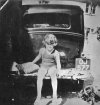
I know from the background exactly where the car was parked when my sister was photographed sitting on the rear luggage rack. It was outside a farmhouse in South Devon which means that it also had had a fairly epic journey for its time: from where we lived, down the A38 and through the very middle of every town on the route – Birmingham, Droitwich, Bromsgrove, Worcester, Gloucester, Tewkesbury, Bristol, Taunton, Exeter, Newton Abbott, Totnes and Kingsbridge. A long, long day, I would imagine, for car and passengers!
This is what the car would have looked like, but this one is more colourful and certainly glossier than our family's original.

Chris
(Sources: family archive, Wikipedia and Chris Sampson)
Onward a further three years from Berlin. It's summer 1935 and OJ 577, a Morris Major of 1932 vintage. Unfortunately, again, this is the best and only image I have of it. Black, with a 6-cylinder 13.9 h.p. engine. My elder brother recalled that within it there was a persistent smell of bad eggs, thought to emanate from the battery.

I know from the background exactly where the car was parked when my sister was photographed sitting on the rear luggage rack. It was outside a farmhouse in South Devon which means that it also had had a fairly epic journey for its time: from where we lived, down the A38 and through the very middle of every town on the route – Birmingham, Droitwich, Bromsgrove, Worcester, Gloucester, Tewkesbury, Bristol, Taunton, Exeter, Newton Abbott, Totnes and Kingsbridge. A long, long day, I would imagine, for car and passengers!
This is what the car would have looked like, but this one is more colourful and certainly glossier than our family's original.

Chris
(Sources: family archive, Wikipedia and Chris Sampson)
G G Jean
Brummy Wench.
This is a photo of my ex boyfriends old works van on holiday in Prestatyn North Wales. I learned to drive in it.Not sure of the make of my uncles car but he drove all the way from Birmingham to Tallybont in it several times. We never owned a car.
Attachments
G G Jean
Brummy Wench.
Thanks Lyn.smashing photos jean..i bet someone could tell you the make and model of that car
Lyn
Richard Dye
master brummie
Chris, super picture and a good bit of history!So we come to the car which IS Dad's No.2.
Onward a further three years from Berlin. It's summer 1935 and OJ 577, a Morris Major of 1932 vintage. Unfortunately, again, this is the best and only image I have of it. Black, with a 6-cylinder 13.9 h.p. engine. My elder brother recalled that within it there was a persistent smell of bad eggs, thought to emanate from the battery.
View attachment 157681
I know from the background exactly where the car was parked when my sister was photographed sitting on the rear luggage rack. It was outside a farmhouse in South Devon which means that it also had had a fairly epic journey for its time: from where we lived, down the A38 and through the very middle of every town on the route – Birmingham, Droitwich, Bromsgrove, Worcester, Gloucester, Tewkesbury, Bristol, Taunton, Exeter, Newton Abbott, Totnes and Kingsbridge. A long, long day, I would imagine, for car and passengers!
This is what the car would have looked like, but this one is more colourful and certainly glossier than our family's original.
View attachment 157680
Chris
(Sources: family archive, Wikipedia and Chris Sampson)








